Latest in the Labs: The Digital Archaeology Laboratory
Indiana Jones was infamously destructive. Even though he was a professor, there was no evidence of efforts to preserve and pass along data about his dramatic finds. If he had met Deidre Whitmore, manager of the Digital Archaeology Laboratory in the Cotsen Institute, the plot surely would have unfolded differently to the benefit of future generations who would have been able to see the data he collected and the knowledge that analysis of that data could provide. But it probably would not have made for a good movie plot.
Fortunately, the importance of the Digital Archaeology Laboratory to the Cotsen Institute and the archaeological community was readily apparent when Willeke Wendrich made its establishment her first priority upon becoming director of the Cotsen Institute. “I think that a digital laboratory transforms archaeology,” Wendrich explained. “One concern in archaeology is how we analyze the information and how we preserve information. We can only excavate something once, after which it is destroyed. So everything has to be recorded and put in databases. If that information gets lost, we have destroyed things for nothing, and that is a heavy responsibility,” she continued. “People are wary of digital technology and rightly so,” she added. “For example, floppy disks cannot be read any longer. One of the things that Deidre is very focused on is long-term preservation. You can do all sorts of fancy things, but if you do not preserve the data, it is really no use.”
“What I have realized during my entire career is that archaeology and digital approaches go hand in hand and that this relationship is increasingly important. I have been using databases since the early 1990s and from the very beginning, I have seen the importance of digital recording and digital analysis of archaeology,” she continued. “So much of learning technology is just knowing what is possible. Our digital laboratory has become a place where people see what can be done and get the resources they need to do it themselves. If you do not train students in these techniques, they will not get jobs.” In fact, many graduates of the Cotsen Institute have acknowledged the contribution to their job search made by their experience gained working with the Digital Archaeology Laboratory and being trained in various software programs.
“I had worked with Deidre in the Fayum (Egypt) when she was a technology-savvy undergraduate student. She pursued an MS in information and library science, and her research was on the use of digital technologies in archaeology. So it was a match made in heaven, and we were lucky to get her,” Wendrich concluded. “In the laboratory, we take a physical object and we digitize it,” Whitmore explained. For example, students and instructors have projects that have generated research questions. “They use the information that they have collected in the field to address these questions. My role is to help them to think through the steps of what they need to know in order to find answers, before going into the field. What types of information will they need to collect?”
“Then we need a way to display the results of that research; to translate their research into data; to represent visually the data around the answer. But it is necessary to present the visualizations with the full context of how the data was collected, how it was processed, how it was cleaned, and how it was analyzed. By having them go through all those steps, they have a greater understanding of what it takes to visualize the data and how the data might be skewed. Then they become more critical when they see a visualization; they question how it came into being. They also become mindful of what it takes to put together a meaningful representation themselves.”
Data Visualizations
The visualization can be anything from a basic chart or graph to a three-dimensional model or a virtual reality experience. As an example, Whitmore was instrumental in developing a three-dimensional model of botanical remains recovered from the Cuncaicha Rockshelter in Peru, explained Sonia Zarillo, a postdoctoral fellow at the Cotsen Institute. “The model allows us to visualize how the different types of botanical remains are distributed horizontally and vertically at the site to assess spatial and chronological patterns of plant use. In the future, we will be integrating data for stone tools, stone tool manufacturing debris, faunal remains, and other artifacts in a combined three-dimensional model to assess spatial distributions of all artifacts to gain further insight on the human use of this important high-elevation site,” Zarrillo added.
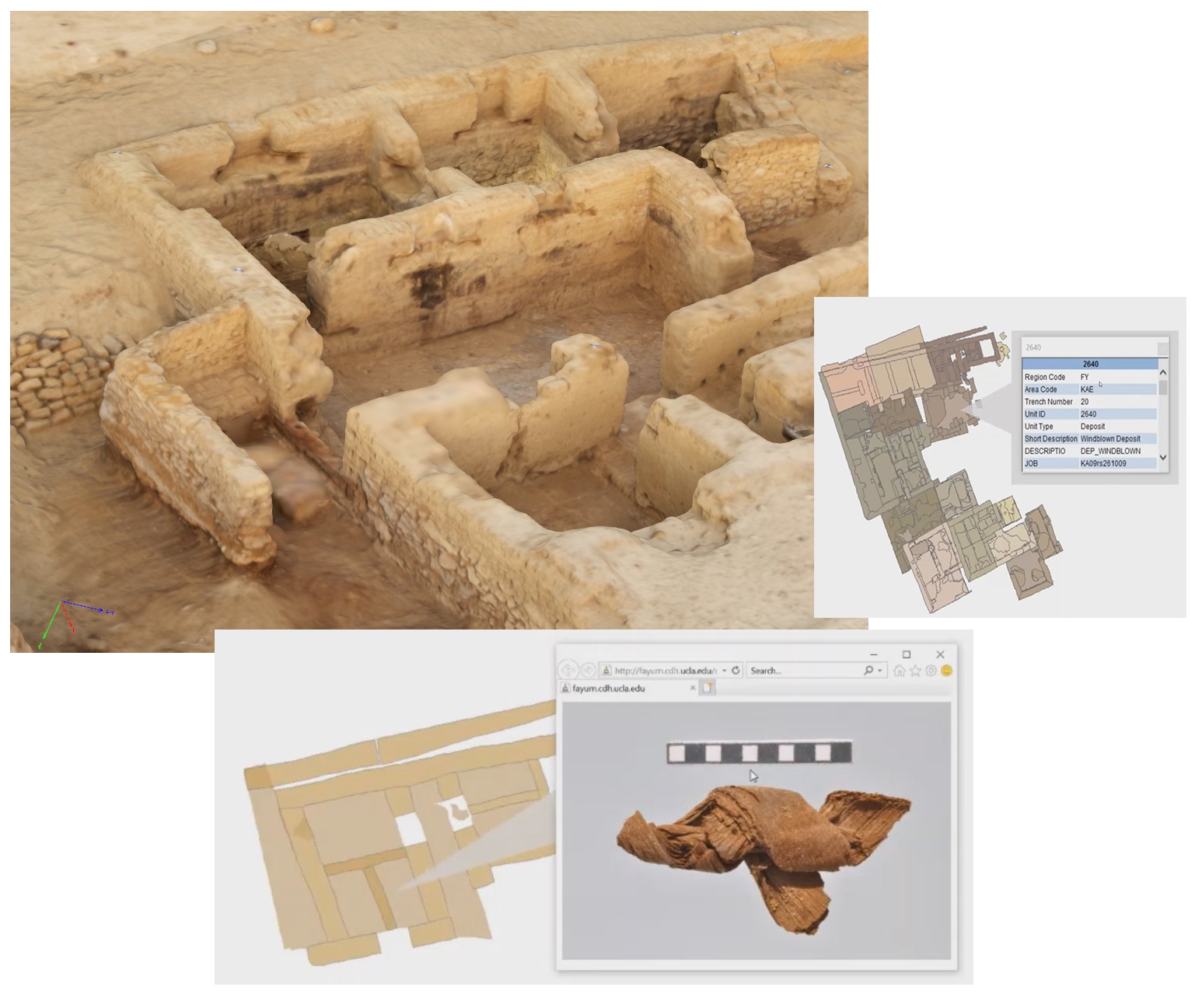 There is a lot of emphasis on the development of three-dimensional models, either by taking photographs to create them, or using programs to reconstruct things that are not there anymore. Whitmore has been instrumental in the creation of an interactive geographic information system model for undergraduate student Doris Vidas, that allows her to explore data. One can click on a part of the three-dimensional model and get additional information to explore the database in new ways. Her next project with Vidas will be migrating a digital reconstruction into a headset that can use a Google Cardboard app, which acts as a virtual reality headset through a smart phone. This allows this reconstruction, and archaeological data in general, to be brought into classrooms and be available in an exciting and more accessible format.
There is a lot of emphasis on the development of three-dimensional models, either by taking photographs to create them, or using programs to reconstruct things that are not there anymore. Whitmore has been instrumental in the creation of an interactive geographic information system model for undergraduate student Doris Vidas, that allows her to explore data. One can click on a part of the three-dimensional model and get additional information to explore the database in new ways. Her next project with Vidas will be migrating a digital reconstruction into a headset that can use a Google Cardboard app, which acts as a virtual reality headset through a smart phone. This allows this reconstruction, and archaeological data in general, to be brought into classrooms and be available in an exciting and more accessible format.
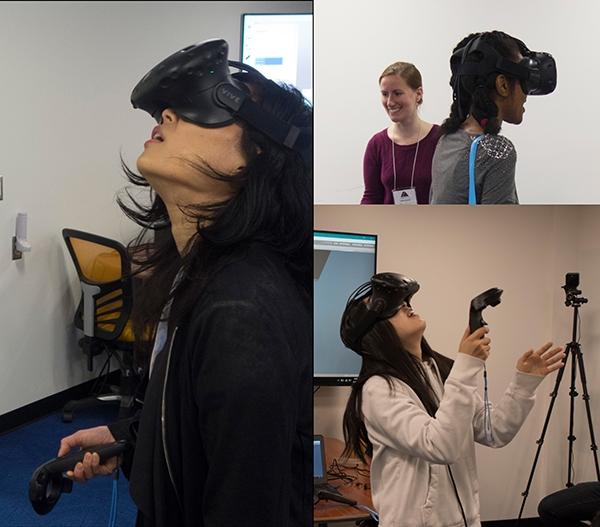 “With virtual or augmented reality, we can look at digital reconstructions here in the laboratory and see these to scale. For example, you can see exactly how tall the temple complex at Karnak (Egypt) appeared in different periods. We are now incorporating the research and data that was used to create that wall reconstruction. That enables scholars who are in the virtual reality space, to see the data that is associated with a wall which helps in understanding how the researcher might have gotten the reconstruction right, how it might be wrong, and how those decisions came about,” she added. “It is a much closer way of interacting with the world as we do in real life. At this point, we are just starting to explore what is possible.
“With virtual or augmented reality, we can look at digital reconstructions here in the laboratory and see these to scale. For example, you can see exactly how tall the temple complex at Karnak (Egypt) appeared in different periods. We are now incorporating the research and data that was used to create that wall reconstruction. That enables scholars who are in the virtual reality space, to see the data that is associated with a wall which helps in understanding how the researcher might have gotten the reconstruction right, how it might be wrong, and how those decisions came about,” she added. “It is a much closer way of interacting with the world as we do in real life. At this point, we are just starting to explore what is possible.
Visiting scholar Marina Gallinaro has been able to transform her ideas into an effective digital tool. She is creating an online atlas of about 2000 Saharan rock art sites in Africa. “The Digital Archaeology Laboratory is an extraordinary resource of the Cotsen Institute; a vibrant place to develop projects integrating archaeology and information technology,” she added. Many projects have been running for years without collecting information in structured formats. This requires migrating the information into a database; getting it into a format where analyses can be performed. Whitmore is collaborating with the library on an institutional repository for UCLA.
Workshops and instruction
 While working with individual students and faculty is a major aspect of the work of the Digital Archaeology Laboratory, Whitmore is also teaching workshops and classes that provide students with the digital skills that are increasingly important in academic research, as well as possible alternative careers. The laboratory will host a variety of workshops bringing in experts from across the campus to address challenges arising in archaeological practices. She is co-teaching the course “Archaeological Data in Action” with Wendrich as part of the digital humanities program. This is a capstone course, the final course that students take to complete their digital humanities program. It is intended to give them a real research project in which they get to participate and to use all the skills that they have built up during the digital humanities program. By co-teaching, Whitmore is able to demonstrate the benefits of having an information professional on digital research projects.
While working with individual students and faculty is a major aspect of the work of the Digital Archaeology Laboratory, Whitmore is also teaching workshops and classes that provide students with the digital skills that are increasingly important in academic research, as well as possible alternative careers. The laboratory will host a variety of workshops bringing in experts from across the campus to address challenges arising in archaeological practices. She is co-teaching the course “Archaeological Data in Action” with Wendrich as part of the digital humanities program. This is a capstone course, the final course that students take to complete their digital humanities program. It is intended to give them a real research project in which they get to participate and to use all the skills that they have built up during the digital humanities program. By co-teaching, Whitmore is able to demonstrate the benefits of having an information professional on digital research projects.
Whitmore has also assisted others in their teachings. Graduate student Robyn Price is currently teaching the second iteration of a writing seminar she created for first-year students. Instead of completing a major essay assignment, the students create a collaborative, public-facing podcast episode. “Deidre has been instrumental in making both my students and me feel comfortable with recording podcasts, while also providing all the necessary technical support needed with uploading podcasts,” says Price. Whitmore was involved in migrating other courses to an online platform because of the Covid-19 pandemic, as well as providing the technical support required for the virtual Pizza Talks. Similarly, with travel uncertain this summer, a series of remote workshops will be offered through the Digital Archaeology Lab to provide students, faculty, and affiliates of the Cotsen Institute an opportunity to explore and develop skills while remaining home.
“Deidre has set up an amazing laboratory that not only provides in-house digital tools, equipment, and training for our students and faculty, but she has created a collaborative community with other laboratories, centers, and specialists across campus,” according to Stella Nair, associate professor of art history and a core faculty member of the Cotsen Institute. This environment “has greatly expanded our critical skillsets and their research potential,” Nair continued. ”In addition, she has been a vital partner in developing the Architecture Laboratory, consulting and advising on needed software and training, as well as co-hosting workshops and providing individual counsel to students. In the relatively short period of time she has been at the Cotsen Institute, she has become integral to our success,” Nair proclaimed.
The Digital Archaeology Laboratory was also helpful to Vanessa Muros, director of the Experimental and Archaeological Sciences Laboratory. “In February, I used the space and its digital resources to hold the workshop “pXRF Analysis: Setting up a Research Methodology,” Muros explained. “I again used the Digital Archaeology Laboratory to give a lecture and tour to the Undergraduate Archaeology Club. The talk that I gave was called “The Intersection of Art and Science in Cultural Heritage Preservation” and introduced the students to the fields of archaeological conservation, archaeological science, and experimental archaeology. For the Shire Archaeological Project, Deidre helped me figure out how to record and archive data collected from the work I did in the field. At the end of the season, she took all the data from the analysis that I did with a portable X-ray fluorescence instrument, my database, and the huge number of images that I took, and was responsible for archiving them,” Muros concluded.
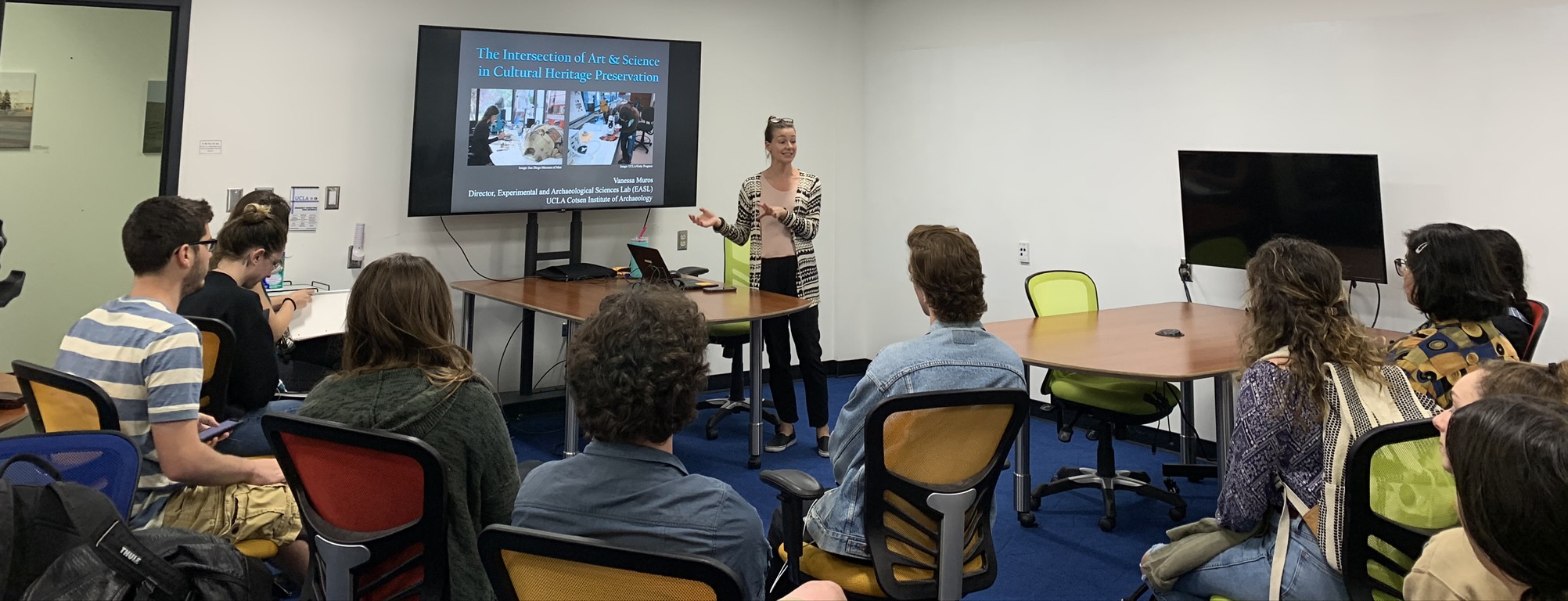
Sarah Beckmann, assistant professor of Classics, explained that she had approached Whitmore earlier this year when she needed help editing photos and plans for publication. “Deidre graciously agreed to help and trained one of my graduate students to work with Adobe Illustrator. She and the Digital Archaeology Laboratory are now my go-to for converting, scanning, and formatting images and plans. I look forward to more collaborative work as my research evolves. I hope that once we are all back on campus, she can introduce some of my classes to the many resources of the Digital Archaeology Laboratory,” Beckmann added.
Digital Publications
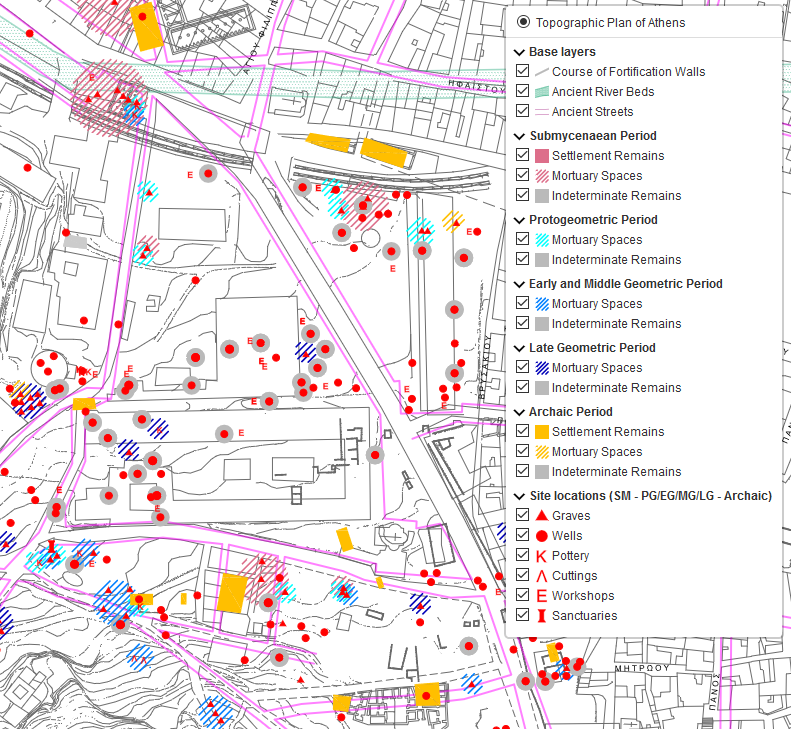 In addition to being manager of the Digital Archaeology Laboratory and its constantly evolving and expanding activities, Whitmore is also Data Publications Manager. “Deidre has been the person responsible for developing the electronic and digital extension of our books in print, and her knowledge of the platforms and formats, and her development of a digital archive have greatly enhanced what we can offer our scholar audience,” explained Randi Danforth, director of the Cotsen Institute of Archaeology Press. “She has really been a game-changer. She is also great to work with. She is really patient and thoughtful about problem-solving, and I feel really lucky to have her on the publishing team,” Danforth continued. “We are moving in a direction toward Open Access publishing, a goal Willeke has been supporting for a while. Deidre’s work is key to this initiative.”
In addition to being manager of the Digital Archaeology Laboratory and its constantly evolving and expanding activities, Whitmore is also Data Publications Manager. “Deidre has been the person responsible for developing the electronic and digital extension of our books in print, and her knowledge of the platforms and formats, and her development of a digital archive have greatly enhanced what we can offer our scholar audience,” explained Randi Danforth, director of the Cotsen Institute of Archaeology Press. “She has really been a game-changer. She is also great to work with. She is really patient and thoughtful about problem-solving, and I feel really lucky to have her on the publishing team,” Danforth continued. “We are moving in a direction toward Open Access publishing, a goal Willeke has been supporting for a while. Deidre’s work is key to this initiative.”
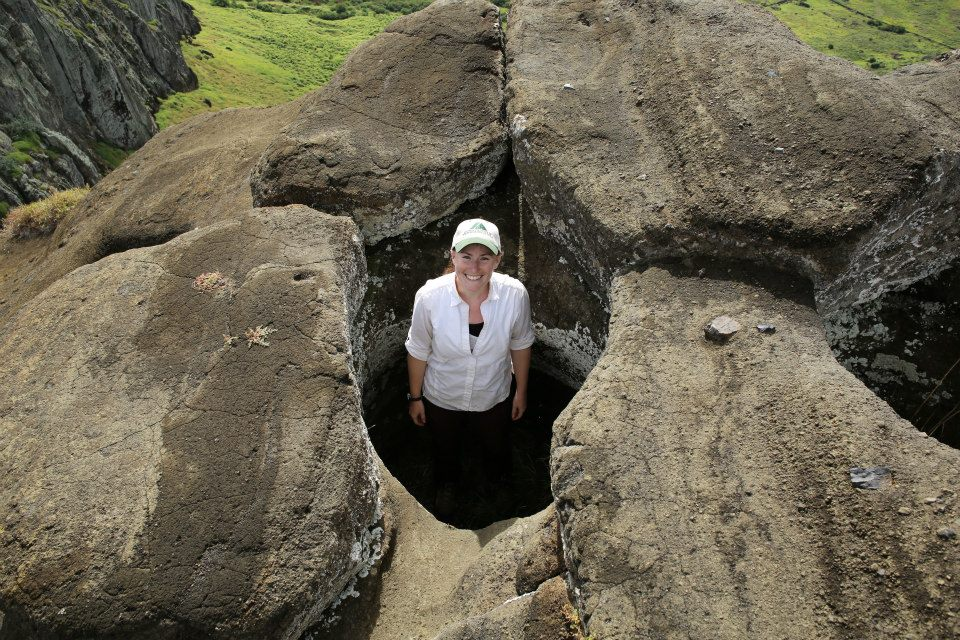 Contact Information
Contact Information
For more information on the Digital Archaeology Laboratory, contact Deidre Whitmore, dal@ioa.ucla.edu or visit the lab website at www.dal.ucla.edu.
To support research and teaching in the Digital Archaeology Laboratory, or for more information, please contact Michelle Jacobson at mjacobson@ioa.ucla.edu.
Figures
Figure 1. 3D model of the Karanis excavation with screenshots of the interactive spatial visualization and the connection to the excavation database.
Figure 2. Reactions of students and visitors to the reconstruction of the Karnak Temple in Virtual Reality.
Figure 3. Flyers from a 2-day workshop that was organized by the Digital Archaeology Lab in conjunction with the Architecture Lab and Institute for Digital Research and Education.
Figure 4. Vanessa Muros teaching a workshop on The Intersection of Art & Science in Cultural Heritage Preservation.
Figure 5. Interactive topographic map of Athens from the CIoA Press data publishing platform, DIG.
Figure 6. Deidre Whitmore in the Rano Raraku Quarry on Easter Island. Photo by Greg Downing.
Published on June 5, 2020.


